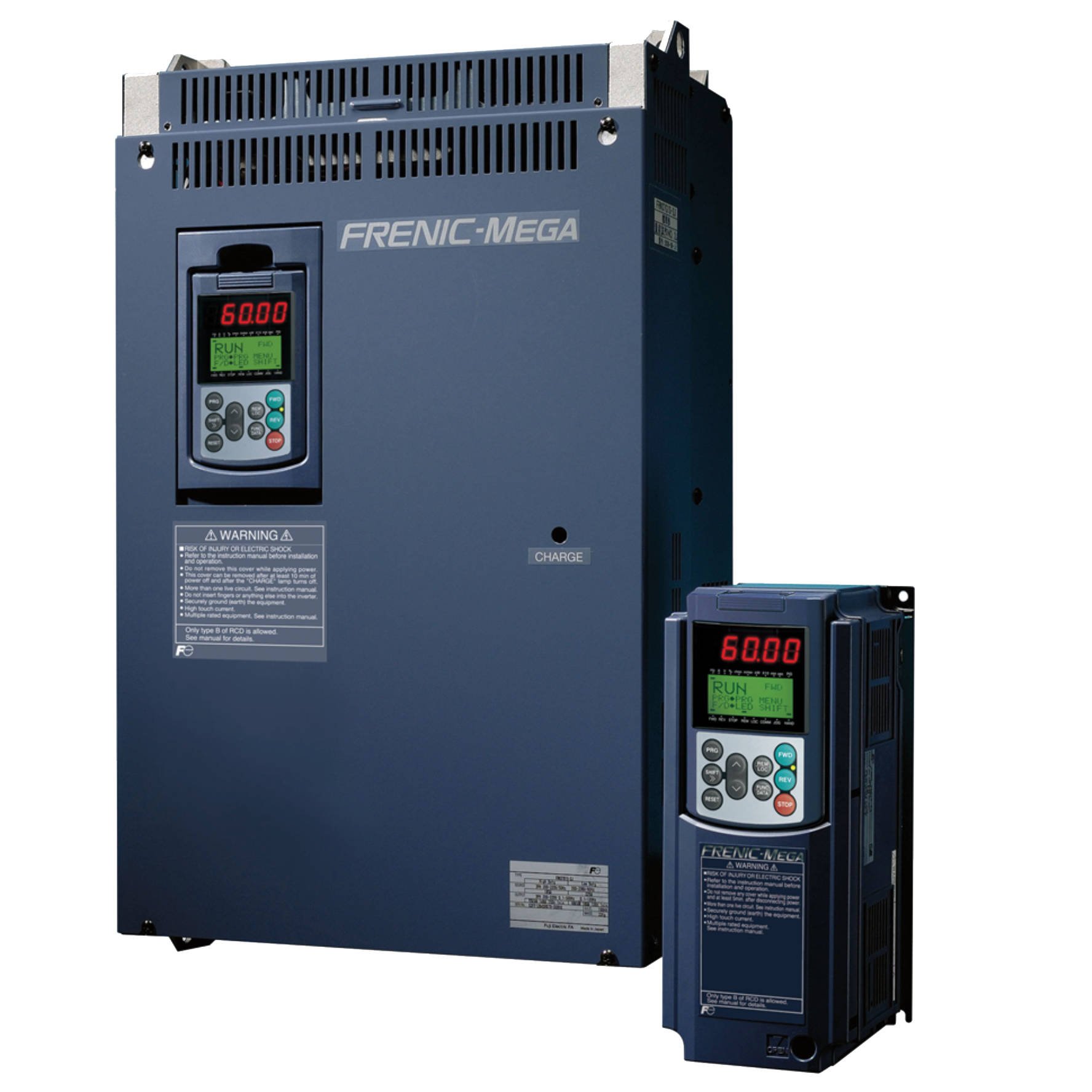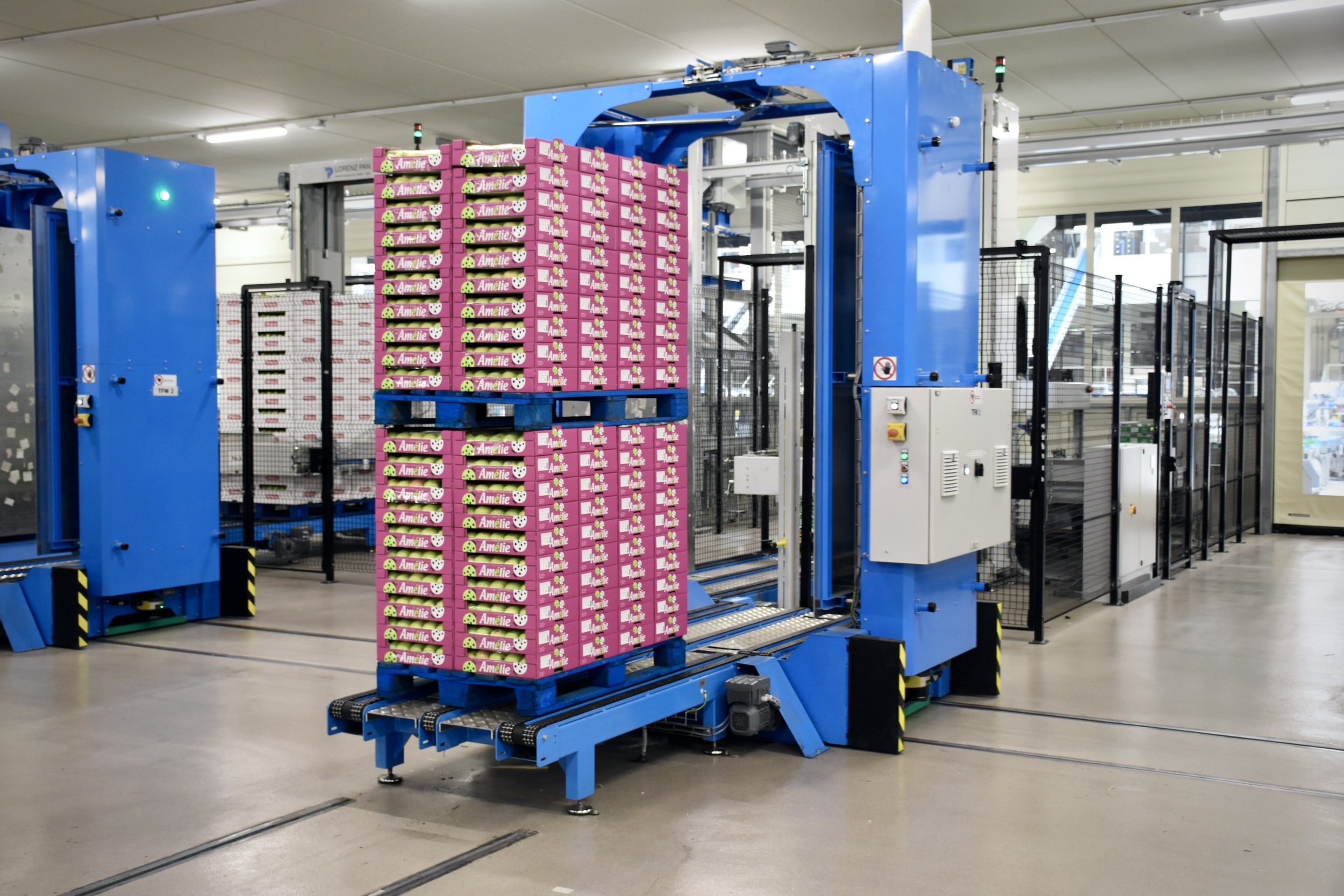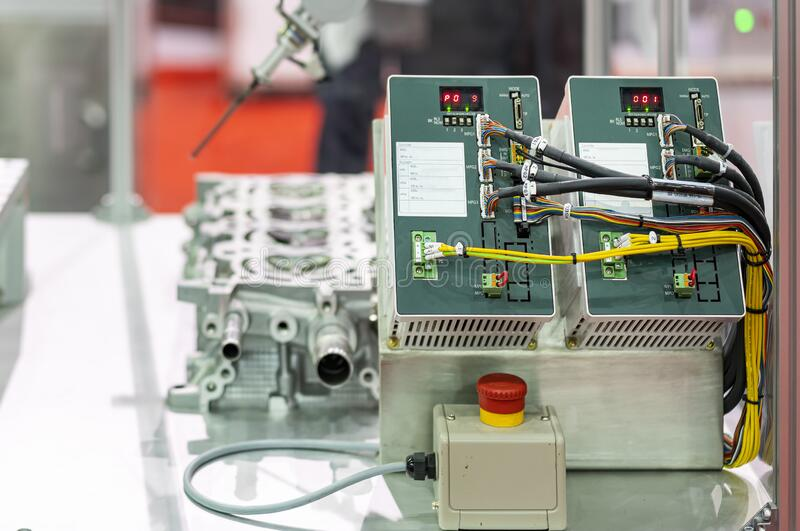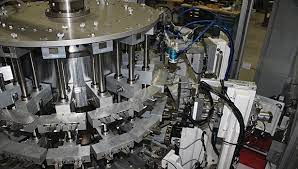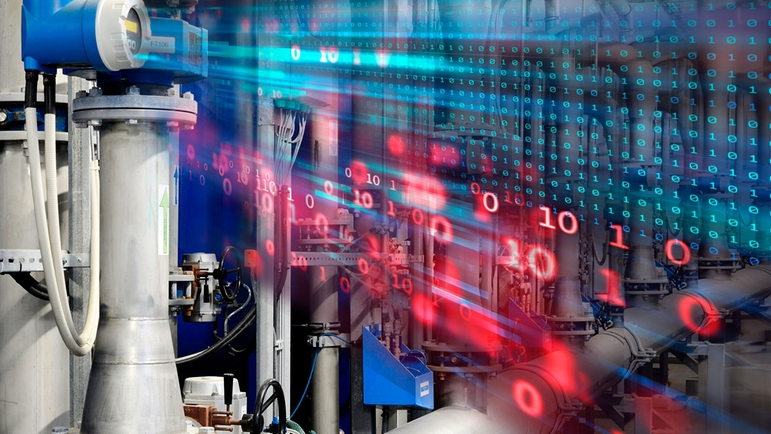IndustLabs prepares your company for the future
Industrial automation plays an essential part in modernizing your industrial capability. Modernizing your automation equipment can improve product quality, reduce errors and improve efficiency. The following steps will help your business stay competitive in a world where more services are undergoing a transition into Industry 4.0. IndustLabs can assist you with upgrading your facilities.
Industrial automation processes can handle manual tasks, control the tools handling distinct steps, and more. Upgrading your facility with programmable automation will reduce costs and give you better insight into your company's expenses, manufacturing processes, and production rates.
Industrial Automation — All You Need to Know
Industrial automation is more than just robotics—it's a comprehensive system upgrade that gives your equipment the ability to handle tasks by itself. Your facility itself becomes smarter so your company can benefit from greater control, lower operating costs, improved quality, increase efficiency, and faster production times. Instead of adopting one smarter process or an isolated improvement, integrating flexible automation tools and sensors into your whole operations can result in exponential improvements.
WHAT IS INDUSTRIAL AUTOMATION?
Industrial automation is the use of control technology to eliminate or reduce manual labor in a manufacturing or process. For example, if you are a food manufacturing company you might want to automate the packaging of your product without the need of human operations. In addition, Industrial automation streamlines industrial systems by integrating computers and smart tools into multiple operations. Using smart technologies and automatic control devices, computers control production or manufacturing processes with minimal human intervention beyond initial programming.
Integrated technologies can perform mechanized tasks that were previously manual or had to be controlled by an operator. Industrial automation improves overall performance by increasing standardization, speed, and adherence to design specifications. It also reduces daily operating costs and the risk of human error.
Industrial automation includes the use of devices such as programmable automation controllers (PACs), PCs, and programmable logic controllers (PLCs).
What are the types of industrial automation?
Industrial automation is the use of control systems, such as computers or robots, and information technologies to assist in the production and servicing of products. Typically this involves using sensors and software to coordinate efficient operations within a manufacturing environment at minimal cost to the manufacturer. Such automation ensures consistency and quality within an assembly line, as well as improved productivity.
What are the 4 types of automation?
Direct automation, Programmable Logic Controller (PLC) automation, Process control system, Human Machine Interface (HMI).
What is Direct Automation?
Direct automation requires no intermediary device to send its instructions—one motor may open or close a series of valves using an electric signal generated by its armature. The other types of automation have a need to communicate their instructions from one device to another.
What is PLC?
A Programmable Logic Controller (a programmable controller) is an industrial digital computer, distributed control system (DCS), or embedded controller that is used for automating electromechanical processes.
Allen-Bradley Programmable Controller
It is a type of industrial computer that provides automation of the control production system.
What is PLC Automation?
PLCs are programmed for specific tasks through a user interface that may either be a human-machine interface or several types of interfacing protocols such as Ethernet, Profibus, and Foundation Fieldbus H1/HSE. PLCs have a large range of applicability to different industries. PLCs are programmed to send logical programming commands to your machinery or factory line.
What is Process Control System?
A process control system (PCS) is an example of "closed-loop" automation. The PCS's code monitors the results from its sensors and sends signals to its actuators as needed, such that any change in its inputs will result in a corresponding change in its outputs. The process is maintained at the desired set point. PCSs are typically found online, meaning that they continuously monitor their respective processes and make incremental adjustments to the process control variables as required.
What is Human-Machine Interface?
In an industrial implementation, human-machine interfaces (HMIs) are typically programmable logic controllers (PLC) devices. HMIs are sometimes referred to as "supervisory control and data acquisition" systems, although many HMI devices no longer collect or process data through an acquisition subsystem.
Human Operator Interface (HMI)
What are the difference between PLC, PCS, and HMIs Interface?
A programmable logical controller (PLC) is a digital computer used for the automation of electromechanical processes, such as control of machinery on factory assembly lines, amusement rides, or light fixtures. A PLC is an example of a hard real-time system since output results must be produced in response to input conditions within a limited time and with no missing data.
A process control system (PCS) is an example of "closed-loop" automation. The PCS's code monitors the results from its sensors and sends signals to its actuators as needed, such that any change in its inputs will result in a corresponding change in its outputs.
An HMI is an interface between a human (the operator) and an industrial process, machine tool, or other application. HMIs are employed in most modern production facilities as well as in office environments. The term HMI is often used interchangeably with Human-Computer Interface (HCI) since it is the preferred control method for computer-based equipment such as process control systems and office automation equipment. HMIs are typically based on a personal computer running an industry-specific software package, although increasing integration of PLCs into the system is giving rise to hard real-time HMI functionality.
What are the different types of automation tools available in the industry?
There are several automation tools used in a variety of industries today.
For Manufacturing: PLCs, PCS, robots, programmable automation controllers (PAC), human-machine interface - HMI.
For Process Automation: Cloud-based technology, SCADA system.
For Oil and Gas: Field instruments, DCS systems.
What is automation in the industry?
With increased pressure to cut costs and improve productivity, automation in industry is becoming more widespread. Advances in technology mean that a manufacturing process can now be monitored and controlled remotely – making it easier for manufacturers and oil and gas companies to reduce manual labor and improve safety.
What are process control and automation?
Automation is a method or system in which the operation and control of equipment are made automatically using mechanical, electronic, computer systems. The term has become widespread in industrial applications as well as in commercial operations such as transportation and distribution.
How is automation used in the industry?
Today, we benefit from automation systems in several ways: increased safety, convenience, and productivity. Some of the most common examples include:
o Industrial manufacturing: an automated production line can reduce errors, provide consistent quality products and meet customer demands for speedier delivery.
o Oil and gas: remote monitoring systems allow operators to closely monitor data at oil rigs and production plants around the world. This enables them to avoid dangerous situations such as fire or chemical leaks. Automation also allows increased accuracy in gauging well levels and reduced time in identifying potential harvesting opportunities.
o Robotics: robots can perform an array of manual tasks that would otherwise be extremely dangerous to humans, such as handling hazardous materials or inspecting equipment within a radioactive environment.
o Supply chain management: data-linked backpacks enable employees to collect information on the move, such as measurements and product readings. Combine this with real-time updates of inventory lists and you have a powerful means for improving efficiency and reducing the risk of stock shortages.
What is process control in the industry?
Process control is the use of automation to maintain material properties, such as temperature or pressure. There are various types of process control – including feedback and feedforward – all of which provide different functions:
Positive Feedback: Positive feedback exists when a system's output influences input. For example: if a thermostat detects that the temperature in your room is a few degrees too high, the system will switch on your heater to reduce the temperature. The lower temperature then results in higher output from the thermostat – which turns on your heater even more. In this way, the excess warmth feeds back as input and triggers an increase in output.
Negative Feedback: Negative feedback exists when a system's output counteracts its input. For example, your heating system uses a thermostat to determine the temperature of a room and switches on or off depending on whether it is too hot or too cold. If, however, the heat isn't needed then the thermostat will detect that the temperature is just right – and switch off your heater. In this way, the system's output cancels out its input – preventing it from changing the temperature any further.
Feedforward: Feedforward is a control system in which a feed-forward controller calculates the required future action before receiving feedback from the controlled system. Feedforward controllers aim to predict how a system will respond and preemptively adjust the system to achieve the desired output.
Why is automation good for the industry?
Industrial processes are often dangerous and difficult to monitor, particularly if it requires traveling long distances or entering hazardous environments. Due to this, companies are increasingly turning to automated solutions to improve safety, efficiency, and productivity.
How important automatic control systems are in industrial processes?
There are many benefits to automated control systems in the industry, including the following:
o Increased safety: Remote monitoring allows companies to closely monitor data at oil rigs and production plants. This enables operators to avoid dangerous situations such as fire or chemical leaks, which can lead to serious injuries. Automation also reduces accidents that would otherwise be the result of manually handling hazardous materials or inspecting equipment within a radioactive environment.
o Reduced risk of stock shortages: Data-linked backpacks enable employees to collect information on the move, such as measurements and product readings, which are then automatically uploaded into inventory lists. This improves efficiency by minimizing the time needed for manual updates that can lead to stock shortages.
o Easier process control: By monitoring their various production processes, companies can maintain material properties such as temperature or pressure by using processes such as positive feedback, negative feedback, or feedforward. Process control can help with a range of issues, from ensuring they meet customer specifications to reducing the risk of equipment failure and/or environmental damage.
o Increased productivity: Automated solutions increase the speed and accuracy of actions, which means that companies can produce higher volumes at a faster rate. This, in turn, reduces costs and increases profit margins. The ability to communicate with multiple locations simultaneously via central control terminals also enables companies to respond more quickly to issues as they arise.
o Increased efficiency: Automation can help companies make their workforce more efficient by reducing the number of errors made during everyday tasks, such as reading gauges and labeling containers. In some cases, automated systems within a production line enable workers to focus on high-level duties or management activities – allowing them to oversee multiple processes instead of taking part in individual tasks.
o Higher-quality products: Data logging and trending can also help companies improve product quality by enabling them to spot any defects before they occur and take the necessary action to prevent these issues from recurring. In the case of food production, for example, this could include setting threshold limits on temperature or pressure to prevent spoilage.
o Increased flexibility: Many companies are increasing the number of products they offer, which can lead to greater diversity in production methods and increased complexity in logistics. This makes it difficult for employees to keep track of data while simultaneously ensuring that a production line remains flexible enough to meet changing demands. Automation ensures that all information relating to a particular product is collected together and easily accessible, so employees can adapt workflows as needed.
o Faster disaster recovery: In the event of a disaster, automated monitoring allows companies to quickly identify where equipment has been damaged or production processes have been disrupted – meaning they can focus on shifting resources from unaffected areas to the affected areas to get everything running smoothly again.
o Improved safety standards: Lowering safety risks, reducing environmental impact, and meeting regulatory requirements are all important factors that influence investment decisions in manufacturing automation. Over time, these trends led to stricter legislation on health and safety issues, which has resulted in more manufacturers using automation with built-in safety features to keep people out of harm's way.
o Increased plant efficiency: Automation technologies allow companies to improve their equipment utilization rates by using an automated procedure, which can increase profitability. They also enable them to work for longer periods without compromising production quality or inputting incorrect data into the system – resulting in more consistent finished products.
o Higher quality raw materials: Using automated devices to monitor the production process allows companies to keep a closer eye on their input materials. If they notice that certain ingredients are becoming less effective, for example, they can adjust their blending ratios or switch to different source materials as needed.
What is the role of automation in the industry?
Industrial automation is increasingly popular—and often necessary—for modern industrial facilities. Some of the advantages of increasing industrial automation include:
Analytics collection
Computerized and smart devices can collect more data about your facility and the details of production. This allows facility managers to learn about error rates, production rates, energy usage, and other factors that will help devise efficiency plans.
Improved product quality
When the fabrication process is automated, each unit of production becomes more standardized. Automated processes better adhere to design specifications within tight tolerances and offer superior repeatability from part to part.
Increased safety
In automated processes, humans shift to the role of a supervisor rather than an operator. This reduces the risk of injury on the production floor because employees have less exposure to potentially toxic materials or dangerous processes.
More flexibility and capacity
Automated production facilities can run 24/7 or adopt more dynamic schedules to meet demand.
More productivity with Manufacturing Automation
Automated processes are typically faster than human capabilities or more simply mechanized processes. Automated machinery operates faster with a reduced rate of error. Smarter facilities can also quickly transition materials through different stages of production for overall faster performance all at the same time reducing waste.
Reduced operational costs
Smart devices and automated machinery run self-diagnostics and alert human operators about potential malfunctions, streamlining maintenance and repair. The resulting preventative maintenance and faster breakdown response times make maintaining the machinery less expensive.
PRODUCTION PROCESS/LINE EFFICIENCY
Each of these advantageous compounds provides greater overall efficiency in the production process. Industrial automation can be included during every step of the line, from initial mixing or production of raw components, to fabrication and machining, to final packaging.
Increasingly smart systems improve line efficiency by taking on specific tasks and alerting human workers when there are signs of a developing problem. This allows employees to spend more time troubleshooting developing problems, creating more efficient processes, and other tasks that require a more creative approach that only a human can offer.
INDUSTRIAL AUTOMATION TOOLS
Every industrial automation system can be custom-crafted to match the facility and the production process at hand. Industrial automation relies upon the different control systems used for integrating the devices or equipment in each process into the larger system. These tools include:
Artificial Neural Network (ANN)
A computer system that can analyze complex factors and processes to make decisions.
Distributed Control System (DCS)
A monitoring control that allows different tools and parts of the industrial process to communicate.
Human Machine Interface (HMI)
The interface allows the automated systems to speak to the human operator and vice versa.
Programmable Logic Controller (PLC)
A control system that carries out predetermined steps in a task, but can also change its operations based on input from sensors and other machines.
Robotics
The mechanical or physical equipment that the smart tools operate and control.
Supervisory Control and Data Acquisition (SCADA)
A system for data acquisition and analyzing real-time data to make decisions.
Different combinations of these parts allow customized industrial automation systems that match specific operational needs.
ROBOTICS & DATA ANALYTICS — SYSTEM INTEGRATION
System integration is one of the most critical aspects of industrial automation. With a supervisory control (SCADA )system, machine learning, artificial intelligence, and other technological advances that collect and act on information, the manufacturing systems become more efficient and self-corrective.
The machines can work together to correct earlier errors or stay informed about developments on the production floor. Integrated systems can also better sense developing malfunctions before they slow down production time or cause unscheduled downtime.
THE FUTURE OF INDUSTRIAL AUTOMATION
With a shortage in human labor, industries are moving towards a greater focus on manufacturing automation and integrated systems because they improve overall efficiency. It's important to invest in smart tools now to keep up with demand and provide the high-quality performance consumers expect. Industrial automation is quickly developing into Industry 4.0, the complete automation of production facilities through cyber-physical systems and the Internet of Things (IoT).
HOW TO BECOME PART OF INDUSTRY 4.0?
With current technology, the first step to becoming part of Industry 4.0 is to automate individual manufacturing facilities. When the machinery can communicate with other in-house systems, the output becomes higher-quality and more efficient. The facility itself can also benefit from improved quality, better energy and maintenance management. The next step is to widen automation across all company facilities and offices for complete virtual communication and control.
Industrial Automation Solutions
Industrial Automation is already part of existing industrial facility designs. Far from being a novelty or a facet of design only for advanced facilities, smart tools and industrial automation are quickly becoming standard practice in heavy industrial facilities and plants that face extreme or demanding conditions.
INDUSTRIAL APPLICATIONS
IndustLabs has retrofitted and designed industrial automation solutions for facilities across multiple industries. Some examples of our work include:
Oil & Gas
IndustLabs can integrate SCADA systems and control panels with pre-existing systems to provide more data and control. We assisted one flare stack manufacturing company by integrating our systems with an oil dehydration product at a third-party site for immediate results.
Food & Beverage
IndustLabs implemented a temperature control system to reduce coffee ground waste by 90% for Quality Cup Systems.
Semiconductor Temperature Control
A thermoelectric module manufacturer needed to update its automation and temperature control systems. The new tools needed to provide precise temperature control ranging from 0–1500° C. IndustLabs designed and implemented a software system to automatically monitor and control eight industrial ovens. This allowed for complete remote control and oversight of the ovens.
IndustLabs can help get to the core of your facility's automation needs and devise a custom solution that allows for automated performance, remote monitoring, and simple controls.
Preparing Your Company for the Future with IndustLabs
Industrial automation is a crucial part of modernizing your facility's industrial capabilities. Upgrading your system with industrial robots, PLCs, and overarching software systems can increase production quality, reduce errors, and make your facility more cost-efficient. Taking these actions now will help drive your company to remain competitive as more providers transition to Industry 4.0.
IndustLabs can help upgrade your facility. Our six key service areas are:
Automation Systems
Safety and standards
Complete turnkey services, including hardware development, custom software creation, and automation field services
Consultation services on how to increase productivity throughout automate production processes
High-quality solutions in manufacturing automation from experienced professionals
Industrial Robots
Industrial Automation Project in Mind?
Contact IndustLabs to learn more about how we can increase productivity, reduce labor costs, improve quality and solve your facility's unique challenges, or to request a quote for automating your industrial processes today. You can also subscribe to our newsletter below for the latest industry trends in automation.










